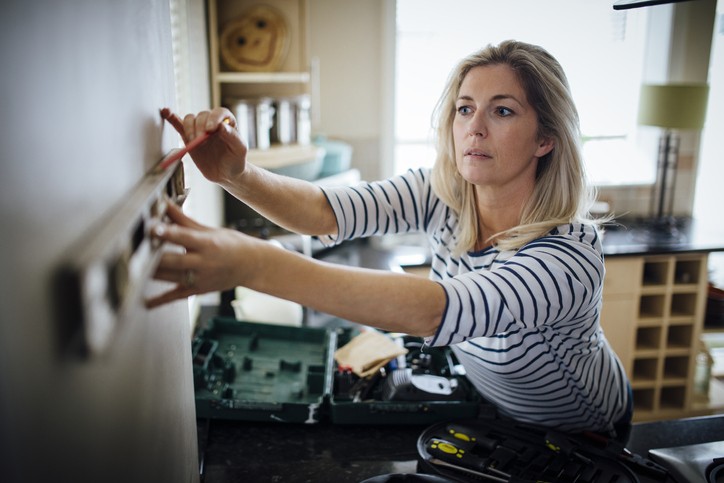Home » Uncategorised »
Home renovations that can increase or decrease the value of your property
This article is an external press release originally published on the Landlord News website, which has now been migrated to the Just Landlords blog.

Online estate agent Strike has researched property buyer trends to determine which home renovations can be beneficial or harmful to the value of your home.
The agent highlights a recent study suggesting that Brits spend £83bn pounds on home upgrades each year. As renovations can be costly, you might want to consider whether it’s worth the upgrade.
Jonathan Magill, UK Network Director for Strike, has released the following tips on which renovations can boost the value of your home and which might reduce it:
Five beneficial home renovations
1. Accentuate period features – potential added value: Up to 10%
While some house hunters prefer a more timeless home, many buyers are willing to pay more for period features that make the house stand out. These could range from small things like skirting boards and architraves to bigger features, such as sash windows or an original fireplace.
In many homes, previous owners may have covered up original features – beautiful Victorian tiles or wood flooring hiding underneath carpets, for example – so, see what your house has to offer and make the most of it. From repairing old cornices and mouldings to restoring beams or timber panelling, take advantage of the hidden treasures in your house.
2. Upgrade the kitchen – potential added value: Up to 20%
Remodelling the kitchen will generally be a smart investment, but if you are just upgrading to sell, there’s no need to go for top-of-the-range. Any new kitchen will still look impressive and give that ‘wow’ factor your buyers are looking for. In fact, even smaller changes — such as just changing the worktops and cupboards — can also bring a healthy boost to the house’s financial worth.
3. Add natural light – potential added value: Up to 8%
One feature that is much more in demand post-COVID is natural light. While glass bifold doors and skylights were already popular in homes pre-pandemic, now more than ever, installing means of natural light in the home can add value. It makes rooms feel brighter and more spacious, which is a definite win.
4. Convert the loft into workspace – potential added value: Up to 15%
For many, working from home is here to stay — and a lot of buyers would like to have the option of a dedicated office space. It may be that you have a spare bedroom but a loft conversion can easily double as a home office. Even taking advantage of an unused nook or cranny by adding a desk can help show your home’s potential.
5. Update the bathroom or add an ensuite – potential added value: Up to 5%
Remodelling will make your house more attractive to buyers, but it isn’t essential if your bathroom is already in a good state. Installing an en-suite, however, is a great way to add value to the home, as demand for the built-in bathrooms is evergreen.
Three home renovations that are more trouble than they’re worth
1. Converting a garage – potential loss: £7,500
While converting the garage into a living area might be a tempting way to increase space in the home, doing so purely to boost property value is misguided. Many people value the garage as storage space for rarely used items or bulky appliances, such as a second fridge. And, of course, a lot of people, especially households with multiple cars, need the garage for its traditional purpose of parking. It’s probably best to let buyers make up their own minds about what to do with this space.
2. Upgrading the utilities – potential loss: £15,000
Whether it’s installing new plumbing, upgrading the boiler or updating the electrical wiring, keeping on top of utility improvements is important for any home. However, these renovations are considered house maintenance, rather than a value-adding upgrade.
Of course, making sure your home systems are in good condition is essential to getting a good price. But they don’t have to be state of the art — if they are already in fine nick, upgrading your utilities just to say that you have isn’t likely to add much value.
3. Quickly dated décor – potential loss: £5,000
While installing current interior trends in your home can definitely make it look stylish, it probably won’t end up making you much more money when you sell.
Rose gold furnishings and quirky tiles might be trendy, but they might not be to the taste of all buyers — so investing in them to make your home more attractive can misfire. Additionally, even if the trends are to the buyers’ tastes, interior fashions don’t last long. People who are planning to live in your home long-term will be thinking of the future.
Instead of investing in trendy interior updates when redecorating to sell, keep it minimal. This is helpful for buyers as it allows them to more easily imagine what they would like to do with the place, and it saves you money too.
Jonathan Magill adds: “Of course, every seller wants to get the best price for their home, so investing in certain renovations is essential to boosting your asking price. But before you rush in to make changes, make sure you take the time to consider what the effect will be on your house value and if the update is worth it for you financially.”




